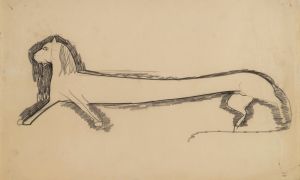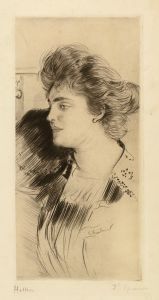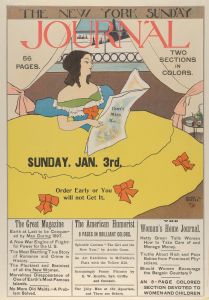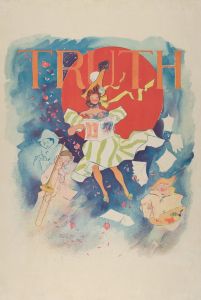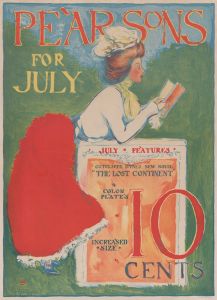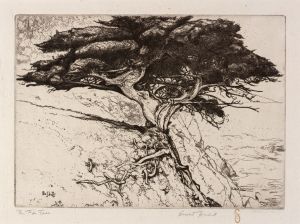
Cameo
A hand-painted replica of Ernest Haskell’s masterpiece Cameo, meticulously crafted by professional artists to capture the true essence of the original. Each piece is created with museum-quality canvas and rare mineral pigments, carefully painted by experienced artists with delicate brushstrokes and rich, layered colors to perfectly recreate the texture of the original artwork. Unlike machine-printed reproductions, this hand-painted version brings the painting to life, infused with the artist’s emotions and skill in every stroke. Whether for personal collection or home decoration, it instantly elevates the artistic atmosphere of any space.
Ernest Haskell (1876–1925) was an American artist known for his contributions to illustration, printmaking, and poster art during the late 19th and early 20th centuries. Among his diverse body of work, the piece titled Cameo is one of his notable creations. This artwork exemplifies Haskell's mastery of line and his ability to create intricate, detailed compositions.
Cameo is a black-and-white etching that showcases Haskell's skill in portraiture and his attention to fine detail. The piece features a profile view of a woman, rendered with delicate and precise lines that emphasize her elegance and poise. The title, Cameo, likely refers to the traditional carved relief portraits often found on jewelry, which the artwork mirrors in its composition and aesthetic. Haskell's use of negative space and his focus on the subject's profile reflect his interest in classical forms and his ability to adapt them into his own artistic style.
Haskell was heavily influenced by the Art Nouveau movement, which is evident in the flowing lines and organic forms present in Cameo. His work often combined elements of fine art and commercial illustration, and he was highly regarded for his innovative approach to design. Haskell's etchings, including Cameo, were celebrated for their technical precision and artistic beauty, earning him recognition among his contemporaries.
While specific details about the creation date or the model for Cameo are not widely documented, the piece is representative of Haskell's broader artistic output during the early 20th century. His works were exhibited in galleries and collected by art enthusiasts, contributing to his reputation as a leading figure in American printmaking and illustration.
Today, Ernest Haskell's works, including Cameo, are appreciated for their historical significance and artistic merit. They are held in various private and public collections, including museums dedicated to preserving the legacy of early American art. Haskell's contributions to the fields of etching and illustration continue to be studied and admired by art historians and enthusiasts alike.








